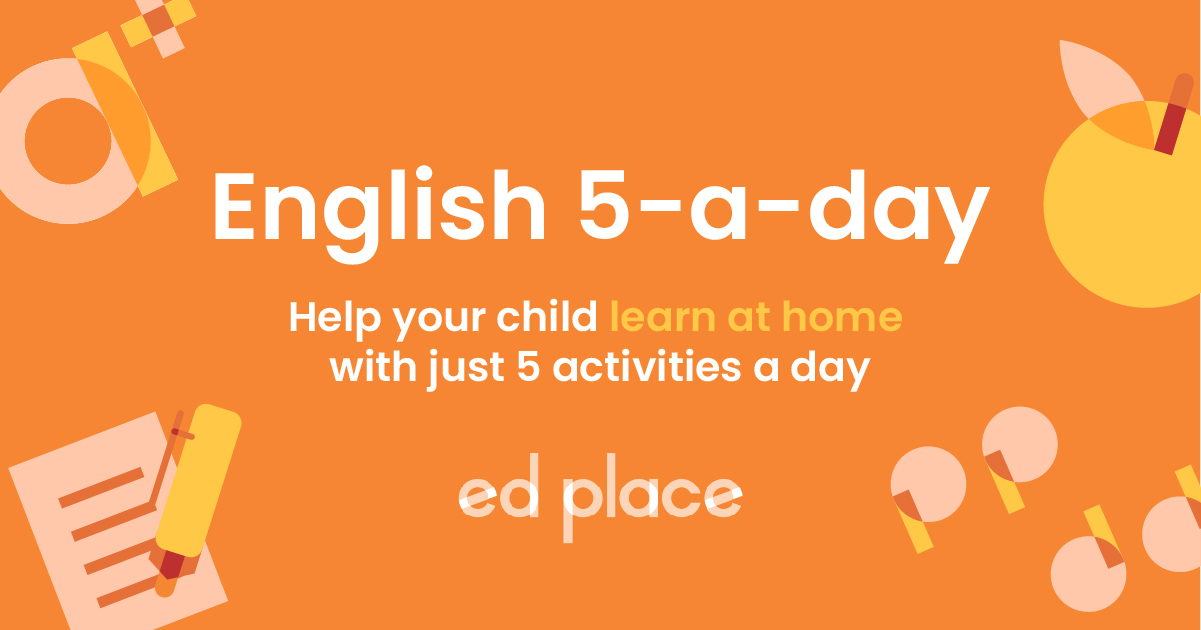
EdPlace's Year 7 Home Learning English Literature Lesson: Using Text as Evidence
Looking for short lessons to keep your child engaged and learning? Our experienced team of teachers have created English, maths and science lessons for the home, so your child can learn no matter where they are. And, as all activities are self-marked, you really can encourage your child to be an independent learner. Get them started on the lesson below and then jump into our teacher-created activities to practice what they've learnt. We've recommended five to ensure they feel secure in their knowledge - 5-a-day helps keeps the learning loss at bay (or so we think!). Are they keen to start practising straight away? Head to the bottom of the page to find the activities.
Now...onto the lesson!
Using Text as Evidence
Using supportive evidence from a text is a great way to demonstrate understanding and assist children in writing about a text. Evidence is a type of proof and, if the correct quotation is chosen, develops and expands a child’s explanation. Children are able to support the argument they're making about a character, theme or mood etc.
After reading, it's always important to check a child’s understanding by asking them questions about the text. Often, they will be able to explain in their own words what has happened, how a character behaved and what the setting was like. But can they demonstrate how they came to that point of view? Can they pinpoint in the text where the evidence can be found? This, is how your child can support their readings of a given text.
Every good lesson has a purpose or an objective. We’re confident by the end of this 5-step guide that your child will be able to:
1) Understand why it's important to use text as evidence
2) Identify the best quotation to support their idea
3) Expand their answer to include an explanation of the quotation they select!
Step 1: PEE
Before we begin to use quotations, it’s important to check that your child understands what some key terminology means. PEE is a mnemonic they can use to help structure their more detailed answers.
Point: The idea or argument your child is making about a text
Evidence: A quote from the text to back up the point being made
Explanation: Expand on how the evidence backs up your point.
Step 2: Why Use Evidence from the Text?
Before asking your child to use text as evidence, it's important that they understand why this will make their answer clear, precise and more sophisticated. The following paragraph and question demonstrate how much more accurate an answer is when it uses text as evidence:
There is no lake at Camp Green Lake. There once was a very large lake here, the largest lake in Texas. That was over a hundred years ago. Now it is just a dry, flat wasteland.
Question: Is Camp Green Lake an inviting place?
Answer: The opening sentence suggests that the setting is not an inviting place. The writer says that “There is no Lake at Camp Green Lake.”
Without textual evidence, the answer would have been brief and unsubstantiated. With evidence, the answer is more specific and supported.
Step 3: Explain the Evidence
Once your child has understood the importance of using text as evidence, they can then begin to expand their answer by providing an explanation of the evidence. If we look at this answer again, we can see how much more detailed and clear it becomes when we explain what the writer was trying to say.
Answer: The opening sentence suggests that the setting is not an inviting place. The writer says that “There is no Lake at Camp Green Lake.” This makes it sound like a strange place that is perhaps not as nice as it sounds.
The explanation of the evidence teases out what the quote suggests and how it supports the original point made.
Step 4: Over to You...
Why don't you both have a go at using the PEE structure to answer the following question? Grab a pen and some paper to write out your answer.
There is no lake at Camp Green Lake. There once was a very large lake here, the largest lake in Texas. That was over a hundred years ago. Now it is just a dry, flat wasteland.
Question: What did Camp Green Lake use to be like?
Step 5: Activities
Now that we've covered this topic together, why not put your child's textual analysis to the test by assigning them the following 5 activities?
All activities are created by teachers and automatically marked. Plus, with an EdPlace subscription, we can automatically progress your child at a level that's right for them. Sending you progress reports along the way so you can track and measure progress, together - brilliant!
Activity 1 - Speech Marks: How to Use Them
Activity 2 - Speech Marks: When to Use Them
Activity 3 - Reading Fiction: 'Holes' by Louis Sachar 1
Activity 4 - Reading Fiction: 'Holes' by Louis Sachar 2
Activity 5 - Reading Fiction: 'Holes' by Louis Sachar 3
Example Answer
P: Camp Green Lake used to have a large lake and wasn’t dry like it is now.
E: The writer says it had “the largest lake in Texas”.
E: This makes it sound as though the town was one of the best places that you could choose to live over a hundred years ago, as it had lots of water in a very hot climate.









